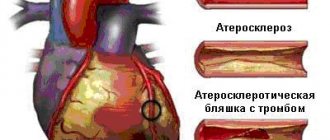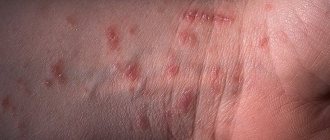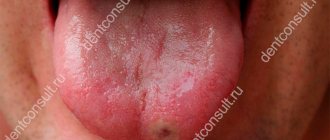Key Facts
HPV, or human papillomavirus, according to official WHO data, ranks second in the world (after genital herpes) among viral infections of the female genital area. Today's medicine knows about 100 types of HPV. Various forms of papillomavirus, according to statistics, are found today in 70% of women. Photos of the manifestations of HPV in women are presented in detail on this page.
What does papilloma look like?
Growths on the body can be localized not only on the skin, but also on the mucous membranes. Externally, it is a compacted head on a stalk, and the wart itself is hanging. The incubation period from the moment of penetration of the papillomavirus until the appearance of the papilloma itself on the body varies from several weeks to several years. The patient does not experience internal discomfort, does not complain about the appearance of large growths or the presence of pain. A wart develops rapidly and may resemble a mole in color, but differs in shape and method of attachment to the epidermis.
Localization of papillomas
The target of some of these neoplasms is the skin, others affect the urogenital tract. In the photo of women, you can most often expect to see images of papillomas in the intimate area: on the outer surfaces of the mucous membranes, in the vestibule of the vagina, and perineum. Less commonly, the virus is expressed in the urethra, vagina, and pubic area. There are also photos depicting papillomas on women’s faces.
How is HPV transmitted?
Papillomavirus has several ways to infect a healthy body. The first thing is intimate intimacy with a person in whose body such a pathogenic infection already predominates. Doctors recommend being selective about sexual relations and not changing sexual partners; know what papilloma is. In addition, other methods of transmission of HPV diagnosed in modern medicine cannot be excluded. This:
- from the surface of the skin through abrasions, injuries;
- during childbirth from an infected mother to a child.
What do you need to know? ↑
There are several distinctive signs of the appearance of HPV:
- Warts.
This is a round elevation above the skin, as a result of the proliferation of the papillary layer and epithelium. Depending on the type and location, they come in different sizes - up to 15 mm. Over time, several groups of warts merge and they form tumors with a wide bottom.
There are 4 main types of warts:
- Ordinary. Most often they appear on the hands and have a diameter of 1-10 mm. No treatment is required because they usually go away on their own.
- Plantar - dense, keratinized formations of gray color, most often appear on the soles of the feet, in places where shoe pressure is applied.
- Flat. They look like round or flat nodules on the arms, legs and face.
- Pointed - small growths on the skin, pink in color, capable of merging and affecting adjacent areas of the skin. They usually appear on the genitals.
- Condylomas are neoplasms on the genitals.
Are divided into:
- Microcondylomas are a non-regressive form in which small round nodules appear on the skin.
- Hyperplastic condylomatosis. It is characterized by extensive growth of the epithelium, at the top of which there is a blood vessel.
- Warty condylomas. Growths on the skin are localized in the inguinal fold and on the surface of the labia.
- Papillomas. This is a benign tumor that looks like a papillary growth on the skin; it mainly affects the mucous membranes of the mouth and pharynx, nose, face and limbs.
Unfortunately, the infection cannot be completely cured, but it is possible to get rid of the symptoms and prevent complications with adequate treatment. Individual therapy is selected for each patient, but the methodology is the same in all cases:
- Destructive methods of treatment, that is, surgical removal; curettage (scraping out the wart using a curette); electrosurgery (used in the treatment of small warts); laser surgery (the leading method of treatment, as it not only allows you to get rid of the wart, but also has a detrimental effect on the HPV virus itself).
- Chemicals. These include salicylic acid, trichloroacetic acid and solcoderm. These agents have a cauterizing effect on the virus and are relatively safe for humans.
- Cytostatic drugs such as cleomycin, podophyllin.
- Immunotherapy. A treatment method aimed at strengthening the human immune system. Can only be used in combination with other methods.
Diagnosis of papillomavirus infection
If suspicious tumors are detected in the genital area and pain and bleeding occur, a woman should immediately contact a medical facility. A standard examination for suspected HPV infection includes:
- examination by a gynecologist, mucous membranes and epidermis of the genitals. The doctor obtains data on the presence of condylomas on the internal genital organs through a visual examination in the mirrors.
- Colposcopy allows you to examine the affected areas in more detail using special equipment. An additional way to identify foci of infection are tests with Lugol's solution and acetic acid.
- cytological examination consists of laboratory examination of scrapings. This analysis allows you to diagnose cancer at the very first stage, when changes in the epithelium cannot yet be seen with the naked eye.
- A biopsy involves removing a small piece of tissue to be examined under a microscope.
A highly accurate method (known as the Digene test) allows you to determine the presence of HPV, reliably determine the type of virus and, accordingly, the degree of its oncogenicity.
Doctor about human papillomavirus infection of the genitals (video)
What else is important? ↑
Diagnosis of the disease is important, today it has been developed very successfully, the Gardasil vaccine has been created, and its analogues are also being developed. Thanks to the classification of enormous information about the disease, specialists have developed a unified algorithm for diagnosing patients. This:
- visual examination of the skin and mucous membranes with possible lesions;
- colposcopy (examination of the cervix using a special instrument);
- cytological examination (scraping from the cervix or cervical canal);
- DNA diagnostics.
People with symptoms of urogenital inflammatory processes, women and men who began sexual activity at an early age, and patients with signs of human papillomavirus infection are subject to mandatory examination. You should also remember the risk factors for infection that should be avoided: various diseases of the genital tract, smoking, cervical lesions, early onset of sexual activity, a large number of partners and their frequent change, and the use of contraceptives. Timely examination allows you to avoid complications, namely cancer.
Each type of papillomavirus carries a certain risk to human health and life, so you should remember about preventive measures.
This is the use of contraception, vaccination, strengthening the immune system, visiting a specialist at least 1-2 times every six months, proper nutrition, lack of stress, and timely treatment of wounds. It is important to identify the virus in the early stages of development to prevent progression of the disease. If an infection is detected, constant monitoring and diagnosis by a specialist is necessary.
Activation of the virus in women
The virion can remain in a woman’s body for a long time without showing itself in any way. It is contained by the body's immune system. Sometimes cure is possible even before the onset of symptoms.
Photo 1: Activation of the virus, its reproduction and changes in the skin are preceded by a persistent or short-term decrease in immunity. Source: flickr (Cofrance Sarl).
The likelihood of virus activation increases if:
- Exacerbations of a chronic disease;
- Acute infectious disease;
- Acquired immunodeficiency, especially dangerous for HIV-infected people;
- Congenital immunodeficiency;
- Hypothermia;
- Hypovitaminosis.
Oncogenic classification
We have already raised the topic of the oncogenicity of all types of hpw (as HPV is designated in analyzes). There are 4 large subtypes, which indicate the extent to which a particular growth transforms into a malignant neoplasm.
- HPW of the highest oncogenic nature (number: 16,18,31,33,39,45,50,56,59,61-62,64,,68,70,73 types), where the most dangerous ones are underlined.
- HPW of medium oncogenic nature (number: 26,30,35,52,,58,65).
- HPW rarely form any mutations (number: 6,11,13,32,34,40,41,42,43,,51,72).
- HPW rarely or never mutates into cancer (others).
It is important to understand that any external changes in papilloma can signal the onset of malignant changes. Blackening of the growth, inflammation of the skin around or the neoplasm itself should be especially alarming.
A normal, harmless papilloma does not hurt if it is not irritated by clothing or jewelry. Therefore, the appearance of pain at the site of papilloma formation is the worst signal, as is its blackening.
Prevention of cervical cancer: HPV types 16, 18
In the HPV classification, the greatest threat is represented by viruses with a high oncogenic risk. But the presence of infection in the blood and even the appearance of papillomatosis do not yet indicate dangerous consequences. If the disease has already made itself felt, the best prevention would be regular visits to a gynecologist or urologist and detailed examinations.
It is also important to maintain immunity:
- Eat properly.
- Remove bad habits.
- Reduce the number of stressful situations.
- Take care of your health - do not neglect diseases, especially gynecological ones.
The World Health Organization recommends that girls aged 9-13 years old be vaccinated. What are human papillomavirus vaccinations and how can they help? There are two types of vaccines - Gardasil, Cervarix. The first is done for types 6, 11, 16 and 18 of papillomavirus, the second - for types 16 and 18. It is best to get vaccinated before becoming sexually active, but vaccinations are also recommended for young women under 25 years of age.
Immunization reduces the risk of developing cervical cancer. However, this does not mean that a vaccinated woman may not undergo mandatory screening examinations.
What danger does papillomavirus pose?
Most strains of papillomavirus do not pose any danger and darken a woman’s mood only by their appearance during manifestation. That is, their main danger is to spoil a lady’s nerves as for most women, problems with appearance are akin to the apocalypse.
The strains described above are rare, but extremely undesirable for anyone. They are highly susceptible to mutation. It is extremely difficult to track changes in the cervix in a timely manner due to the fact that only a gynecologist can look into the “root of all troubles”.











